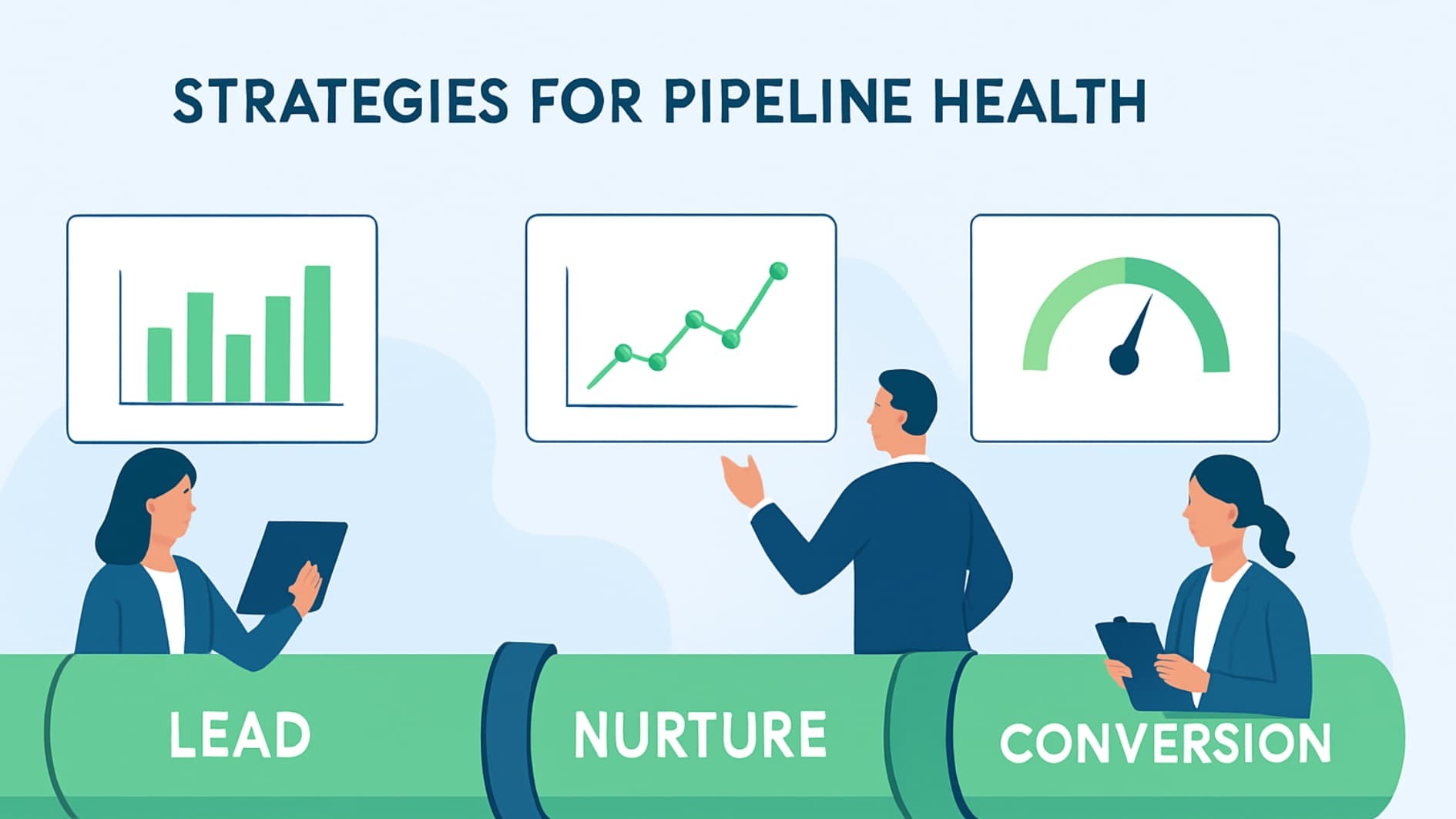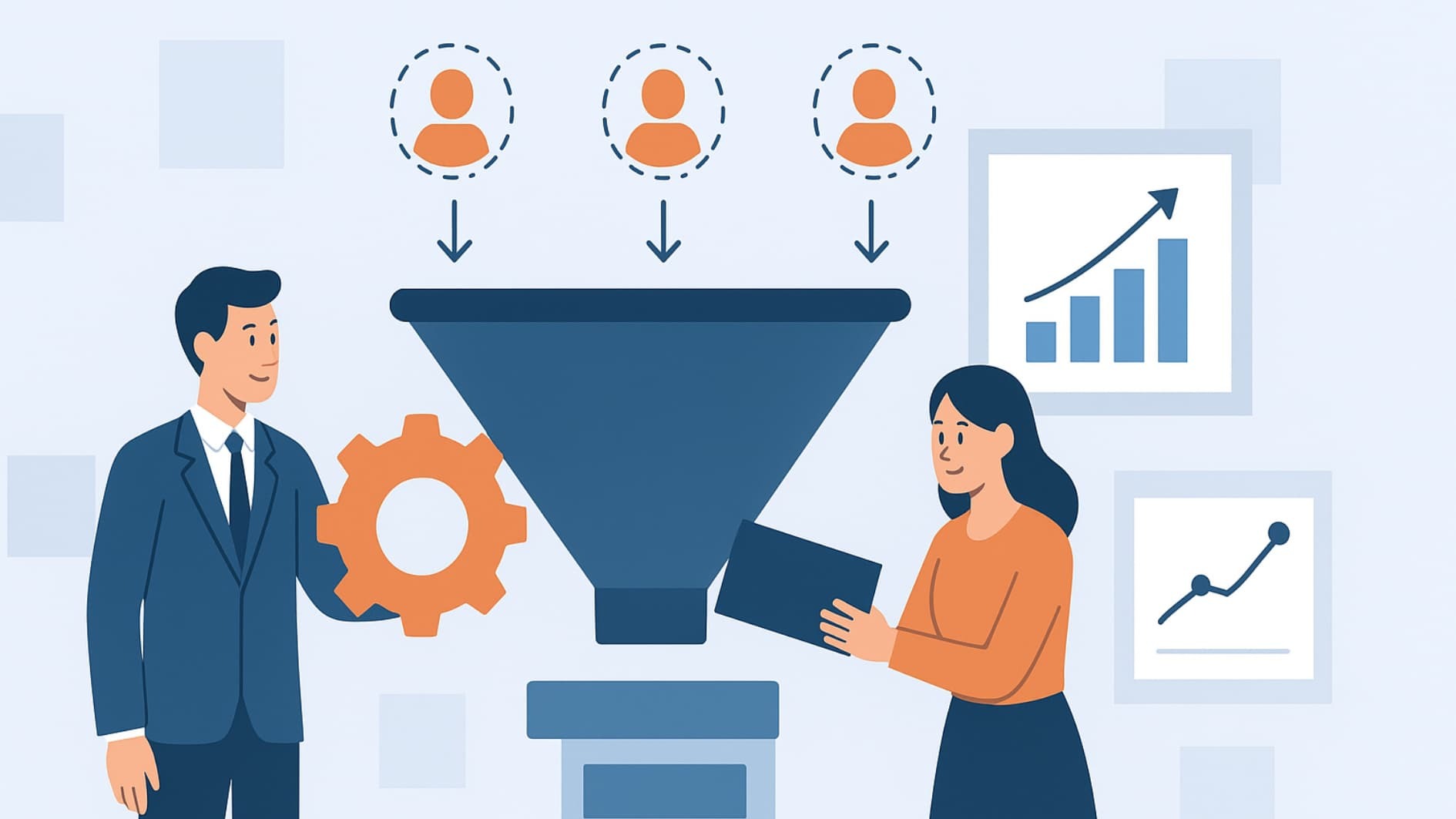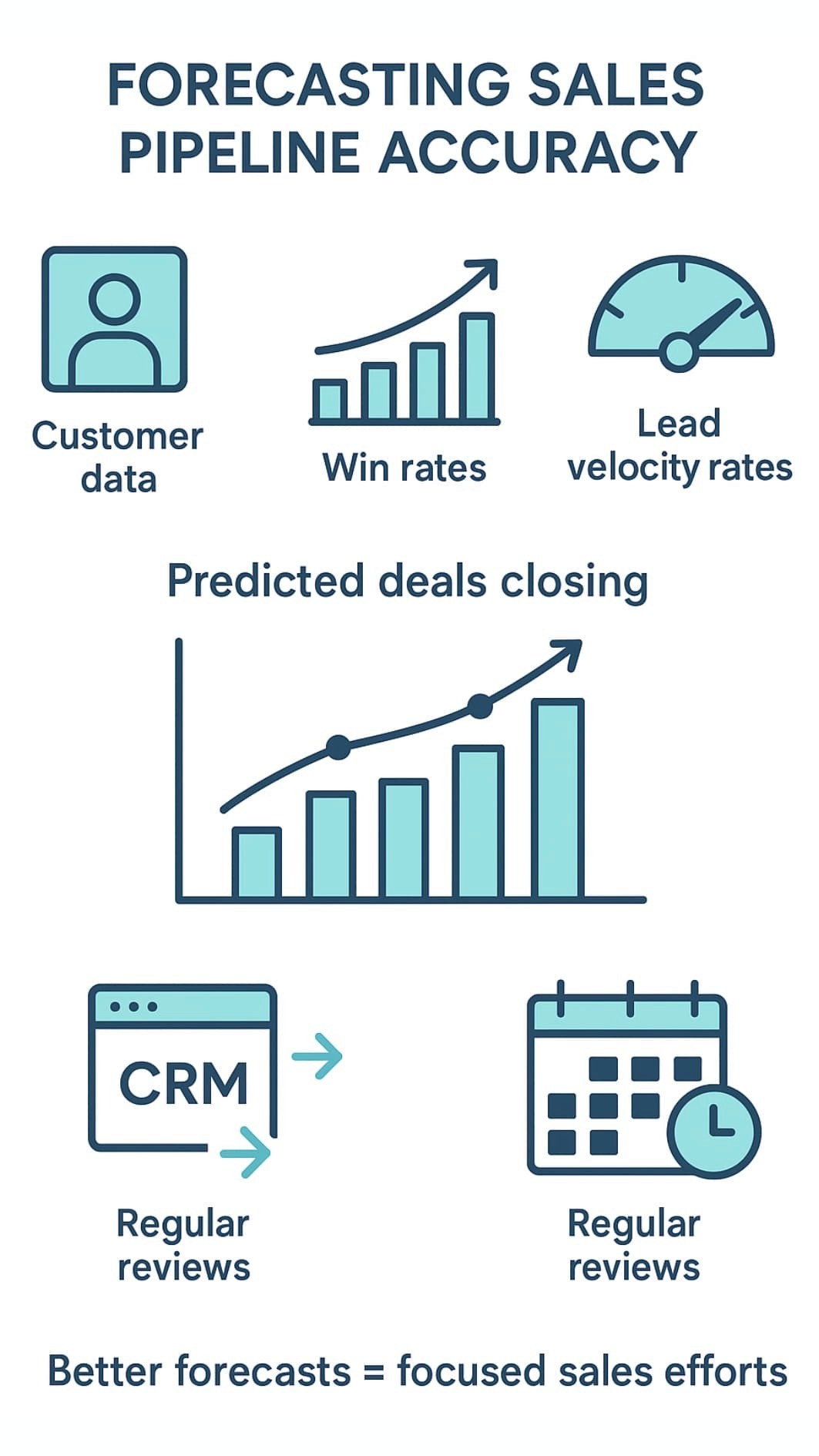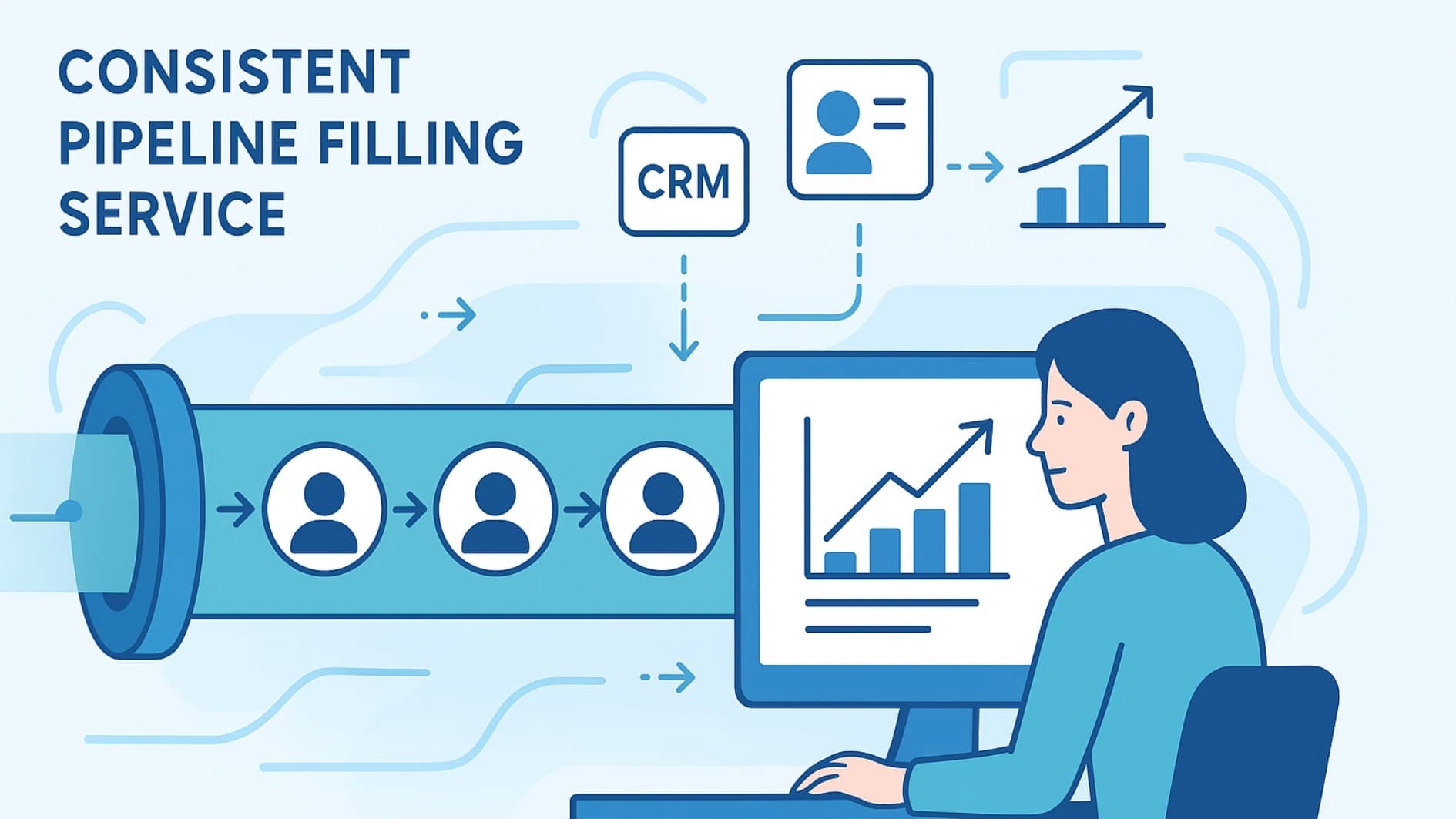Lead Generation Company Solutions
If you're struggling to get enough good leads, you're not alone. After helping hundreds of B2B companies with cold outreach, we've learned that getting qualified leads isn't complicated, it just needs the right approach.
At Hyperke, our teams have spent years testing what works in cold emails and calls to reach decision makers. We don't use fancy automation or complex systems. Instead, we stick to straightforward outreach that connects with the right people at the right time.
Want to know exactly how we help our clients fill their pipelines and close more deals? Keep reading.
Key Takeaways
Keep track of key metrics like win rates and sales cycles to spot problems early.
Use AI SDRs and lead scoring to focus on warm leads that are a good fit.
Align sales and marketing teams to build stronger, personalized outreach that builds trust.
Key Pipeline Generation Tactics
Tactic | Description | Impact |
Monitor Pipeline Metrics | Track lead conversion rates, win rates, sales cycle length. | Early identification of issues, improved forecasting. |
Segment Your Pipeline | Divide pipeline into stages to focus efforts. | Efficient resource allocation, identification of leaks. |
Implement Lead Scoring | Prioritize high-potential prospects. | Increased conversion rates, reduced wasted effort. |
Leverage CRM Tools | Automate tasks, track progress, gain insights. | Optimized pipeline management, improved sales velocity. |
Align Sales & Marketing | Synchronize efforts for consistent messaging and lead nurturing. | Increased lead quality, improved conversion rates. |
Develop Buyer Personas | Tailor outreach to specific customer segments. | More effective communication, higher engagement. |
Use Account-Based Marketing | Target high-value prospects with personalized campaigns. | Increased deal size, improved ROI. |
Focus on Value-Driven Engagement | Highlight ROI for C-level executives. | Increased buy-in, faster decision-making. |
Strategies for Pipeline Health

A healthy sales pipeline starts with paying attention to a few important things. We always check key metrics first. Things like win rate, sales cycle length, and lead quality tell us if leads are moving or stuck. For example, if leads sit too long in early stages, it means something needs fixing.
Next, we break the sales funnel into stages, like early stage, middle, and late stage. This helps our sales team focus on the right leads at the right time. Lead scoring is one of our favorite key tactics. It uses data like job titles, intent data, and buyer behavior to figure out which leads are ready to buy and which are not.[1]
We also use AI SDRs and AI agents to help with heavy lifting. These tools send targeted emails, make phone calls, and follow up with leads automatically. That saves our sales reps a lot of time and helps move leads faster through the sales funnel. Our tech stack includes CRM and sales intelligence tools, which give us real-time customer data and visitor behavior to guide sales efforts.
Here’s a quick list of pipeline health steps we follow:
Watch win rates, lead quality, and sales cycles regularly.
Break the sales funnel into clear stages.
Use lead scoring to spot qualified leads.
Use AI SDRs and CRM tools to automate outreach and track responses.
These steps help us keep a strong pipeline that grows over time.
Impact on Sales Pipeline
When your sales pipeline is healthy, everything gets easier. Sales reps know which leads to focus on, so they close more deals and win rates go up. The sales cycle becomes shorter because leads move faster. We’ve seen this again and again at Hyperke. Using AI lead generation tools and smart sales strategies helps sales teams spend less time on bad leads and more time on warm leads.
A healthy pipeline also builds trust. When you respond fast and give personalized content, your prospects feel understood. That builds stronger relationships, which is key for B2B sales.
Here’s what a healthy pipeline brings:
Higher win rates.
Faster sales cycles.
Better sales forecasting.
More efficient sales reps.
Stronger trust with prospects.
Build B2B Sales Pipeline

Building a B2B sales pipeline means knowing exactly who you want to reach. We help clients define their ideal customer profile by job titles, company size, and industry. When you know your target audience, your sales content and outreach become more effective.
You can mix outbound sales efforts like cold emailing and phone calls with inbound motions like blog posts and lead magnets. Outbound motions help you engage prospects directly, while inbound motions attract potential customers by offering valuable content.
It’s also important to get your marketing team involved. When sales and marketing work together, they nurture leads better. Marketing qualified leads become sales qualified leads, and your sales reps have a steady flow of warm leads.
Here’s what we do to build pipelines:
Define ideal customers clearly.
Use targeted emails and phone calls.
Create blog posts and lead magnets.
Align sales and marketing teams.
Use AI agents and sales tools to manage leads.
This approach helps build a sustainable pipeline that supports long-term revenue growth.
Increase Sales Pipeline Velocity
Speed matters in sales. The faster your leads move through the sales funnel, the faster you get revenue. To speed things up, we focus on lead qualification. Lead scoring helps us quickly spot leads who are a good fit and ready.
We also automate repetitive tasks like follow-up emails and scheduling phone calls with AI SDRs and sales tools. This frees up sales reps to focus on talking to prospects and closing deals.
Our sales team trains regularly to spot pain points early and handle objections quickly. This proactive approach keeps sales cycles shorter.
Ways to speed up pipeline velocity:
Focus only on qualified leads.
Automate follow-ups with AI tools.
Train sales reps on quick objection handling.
Use AI agents to nurture leads fast.
At Hyperke, combining AI SDRs with smart sales strategies helps us cut sales cycles and close deals faster.
Wyoming Sales Pipeline Development
Every city has its own market vibe. Buyer behavior and sales cycles can differ by region. We study local industry trends and buyer behavior to tailor pipeline strategies that work best locally.
For example, certain job titles or industries might dominate in your city. Focusing your outreach on those target accounts can improve pipeline growth and conversion rates.
How to develop your pipeline locally:
Study local buyer behavior and market trends.
Adjust messaging to fit local pain points.
Target common industries and job titles in your area.
This local focus makes your sales efforts more effective and relevant.
Forecasting Sales Pipeline Accuracy

Good sales forecasting depends on real data and regular checks. We use customer data, win rates, and lead velocity rates to predict how many deals will close and when.
We rely on CRM sales intelligence tools to apply these numbers and adjust our forecasts often. Regular reviews help us make sure the sales pipeline stays on track.
How we improve forecasting:
Use past sales data to find patterns.
Use forecasting tools inside our CRM.
Review pipeline metrics regularly and tweak as needed.
Better forecasting helps sales teams plan and focus their efforts where they matter most.
Outsourced Pipeline Generation
Sometimes, companies want to grow pipeline fast and outsource lead generation to specialized agencies. This can help generate more pipeline without adding heavy lifting for your sales team.
But it’s important to keep control of lead quality. You want leads that fit your ideal customer profile and meet your qualification criteria. Track cost per lead, win rates, and lead quality to make sure outsourcing works.
Remember these points:
Outsourcing can grow your pipeline faster.
Keep a close eye on lead quality.
Track key metrics to measure success.
At Hyperke, we focus on performance-based outbound sales to make sure pipeline generation efforts deliver real results.
Key Metrics for Pipeline Growth
Knowing your key metrics makes pipeline management easier. The main ones to watch are:
Lead Velocity Rate: How fast qualified leads grow.
Win Rate: How many deals close.
Sales Cycle Length: How long it takes to close deals.
Pipeline Coverage Ratio: How much pipeline value you have compared to sales targets.
These numbers help find problems and improve your sales process.
A 2025 Salesforce State of Sales report found that top-performing sales teams track pipeline metrics 1.8× more frequently and see 29 % higher forecast accuracy than underperforming teams, proving that disciplined metric tracking directly drives pipeline growth.[2]
Consistent Pipeline Filling Service

Your pipeline needs constant care. We use tools for email marketing and AI SDRs to keep outreach automated and steady. This stops your sales reps from burning out and keeps prospects engaged.
We also schedule regular prospecting to keep fresh leads coming. Predictive analytics help us spot new opportunities early, so we act fast.
Content marketing plays a big role too. Blog posts and lead magnets build brand awareness and build trust over time.
How to keep pipeline full:
Automate emails and outreach.
Prospect regularly.
Use analytics to find new leads.
Share valuable content often.
This steady work builds a strong, healthy pipeline.
Strategic B2B Sales Pipeline Building
Sales and marketing must work as one team. We make sure messaging stays clear and personalized at every stage of the sales funnel.
We build detailed buyer personas so outreach fits the right target accounts. Account-based marketing helps us focus on high-value prospects with personalized campaigns.
We keep generating leads with content, events, and partnerships.
Key parts of strategic pipeline building:
Align sales and marketing efforts.
Create buyer personas.
Use targeted campaigns for key accounts.
Keep lead generation steady.
This approach builds stronger relationships and helps drive revenue growth.
B2B Pipeline Development for C-Level Executives
Selling to top CMOs and executives needs care. They want to see clear business impact and return on investment.
We use direct emails, phone calls, and referrals to connect with them. Proposals must be tailored to their specific business problems and buying committees.
Tips for executive pipeline building:
Focus on ROI and business results.
Use executive-level outreach channels.
Leverage referrals and networks.
Customize proposals carefully.
Hyperke helps companies engage C-level prospects with sales strategies that build trust and move deals.
FAQ
What are the most effective pipeline generation tactics for B2B companies?
We've found that nothing beats combining personal outreach with targeted email campaigns, it's what we do every day at Hyperke. Our outbound sales strategies cut straight to what matters: finding the right prospects and connecting meaningfully.
By using AI SDRs for the initial groundwork, we've seen dramatic improvements in lead quality. When we blend these tools with human touch points, we build trust that converts into real pipeline growth.
How can AI Agents improve the sales process and win rates?
Our AI Agents handle the tedious parts of qualifying and nurturing leads. They analyze customer data and watch for buying signals, which lets our sales reps zero in on warm leads that make sense for us. We've seen this approach shrink sales cycles while boosting win rates, keeping that pipeline flowing nicely. It's not rocket science, just smart use of technology to support human connections.
How do sales and marketing teams align for better pipeline generation?
Success happens when everyone knows exactly what makes a qualified lead. Marketing creates blog posts and social content that pulls in prospects, while sales jumps in with timely phone calls. We've learned it's crucial to track shared metrics, both teams need to speak the same language. When we coordinate like this, leads move through the funnel naturally, and deals close faster.
What role does AI play in building a sustainable pipeline?
SDR agents are changing the game in B2B marketing, they're making everything run smoother while scoring leads more accurately. Through our work with clients, we've seen how marketing automation helps decode buying behavior patterns. This data-first approach means steady growth, better conversion rates, and a pipeline that keeps delivering month after month.
Conclusion
Building a strong sales pipeline is a team sport, and it needs simple, clear steps. Using key metrics, lead scoring, and the right tech stack helps keep the pipeline healthy. When sales reps, marketing teams, and AI SDRs work together, your pipeline grows steadily, win rates improve, and sales cycles shorten.
Our experience shows that steady pipeline growth comes from consistent effort and smart use of data, these tactics help build trust and move leads faster.
At Hyperke, we've seen how simple steps like tracking metrics and using smart outreach tools can make a real difference. Our teams help companies like yours combine outbound sales with personalized follow-up to keep leads moving.
Ready to fill your pipeline with qualified leads that actually close? Let’s talk to Hyperke about your sales strategy.
References
https://www.atlassian.com/blog/loom/pipeline-generation
https://www.salesforce.com/resources/research-reports/state-of-sales/
